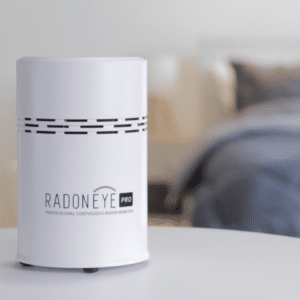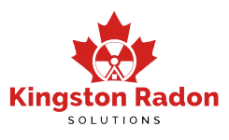
If you suspect you have high radon levels in your home, it is critical to lower these levels for your health and safety. Here is what to do:
1) Test
Since the gas is odorless, tasteless, and invisible, the only way to detect radon levels is to test the levels. It doesn’t matter if your home is newly built or an older residence; you are at risk for high radon levels either way. (Newly built homes should test during the first season you use heat).
There are long-term and short-term testing options. A short-term test lasts anywhere from two to 91 days. The benefit of short-term tests is getting results quickly should you need them. A long-term test is between 92 days and one year. This test will provide you with an average, as radon levels fluctuate based on day-to-day and season-to-reason.
It is Health Canada’s recommendation to do a long-term test before deciding to mitigate the problem.
If you have a mitigation system installed in your home, have a certified mitigator perform a short-term test (minimum 48 hours in length) to ensure the system’s effectiveness.
2) Return The Detector
The next step is straightforward: ensure the device stays in location for the entire testing timeframe, and then return it to the lab for analysis. Make sure to mark the date for return or have your testing professional pick it up.
3) Evaluate the Results
After the device is analyzed, you will receive your lab results. The Health Canada safety threshold is 200 Bq/m3, as health risks are lower below that level. You can drive your levels (and therefore, health risk) lower than that, but Health Canada leaves that to the homeowner’s discretion.
If your levels are higher, Health Canada recommends the following timeframes for mitigation depending on the levels:
- Under two years, if levels are between 200 Bq/m3 and 600 Bq/m3
- Under a year if greater than 600 Bq/m3
4) Mitigate It
Finally, if you have your test results back and radon mitigation is required, you need the services of a C-NRPP Mitigation Professional. At that point, several mitigation measures can be utilized:
- Sealing the foundation (prevents radon from entering)
- Ventilation measures to dilute the radon concentrations in the air
Active Soil Depressurization. It is a mitigation system that removes radon from under a building and allowing it to exit outside. It is the most effective method




